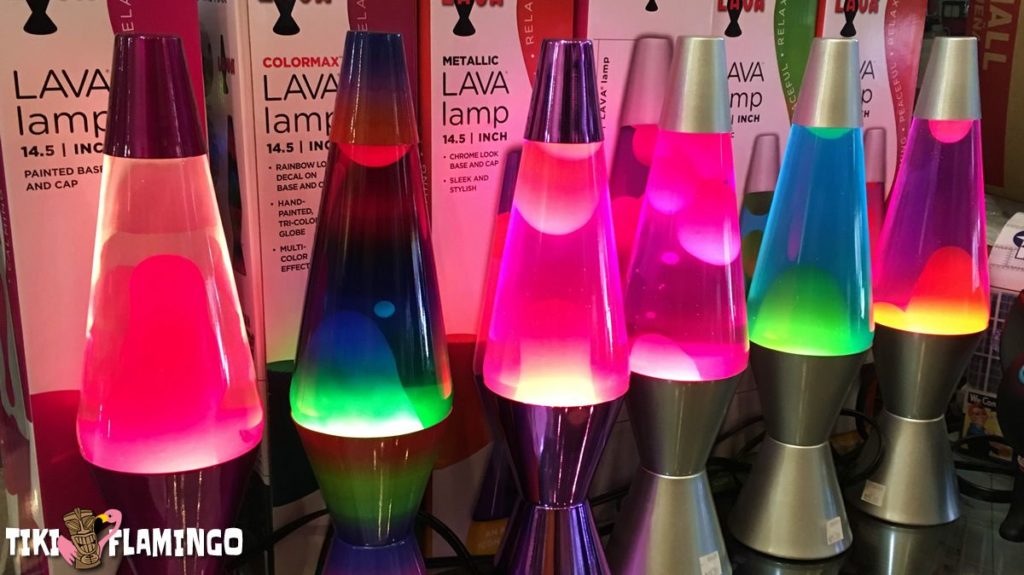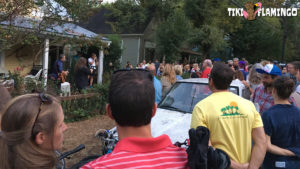There is arguably no greater piece of kitsch decor than the iconic lava lamp. This clever, enthralling mood light has cast its mellow, burbling glow in groovy dorm rooms, righteous apartments, and swinging suburban homes for over 50 years.
If you’ve never owned a lava lamp before, we here at Tiki Flamingo strongly encourage you to rectify this terrible travesty in your life. Nowadays, lava lamps are incredibly affordable and a fantastic conversation piece. So, in order to keep this conversation alive, here are some cool lava lamp facts to share with your next houseful of party guests.
History of the Lava Lamp
The lava lamp was invented in 1963 by British inventor, David George Smith at the behest of entrepreneur and naturist, Edward Craven Walker. The two formed a company called Crestworth based in Poole, Dorset in the U.K. and began selling several versions of lamp, which they marketed under the name “Astro Lamp”.
In 1965, two American entrepreneurs, Adolph Wertheimer and Hy Spector, came across the Astro Lamp at a trade show in Brussels. They bought the American rights to the lamp, renamed it the Lava lamp, and opened a manufacturing facility in Chicago under the name Lava Corporation.
All these years later, both companies still exist, albeit with some changes. The original Crestworth factory in Poole, Dorset is still in operation and still making lava lamps, although in 1992, the company’s name was changed to Mathmos, the moniker for the bubbling life force in the 60s sci-fi classic, Barbarella. The American lava lamp company has changed hands quite a few times over the years and is now currently owned by Schylling Inc.
A Mood Light for the Psychedelic 60s
If you’ve ever been around a lava lamp, you know they don’t actually provide much usable light. Originally patented as a “display device”, the lamp was never meant to light up a room, but rather provide an intriguing decorative focal point to a more dimly lit space.
The lava lamp’s bubbling, mesmerizing, mood-setting powers were irresistible to the chemically-experimenting counterculture of the 60s. They were attracted to it like a moth to a flame and the lamp became de rigueur decor for every groovy pad and swinging flat during the psychedelic era.
Ups and Downs in 70s and 80s
Like the plastic pink flamingo yard ornament, the lava lamp lost its appeal to the youth of the 70s, who were driven by a new awareness of the natural environment and a disdain for frivolous consumerism.
The 80s, however, saw a minor resurgence of the lava lamp with the explosion of color and kitsch that was new wave music. Bands like The B-52s, Devo, and The Go-Go’s went dumpster diving into pop culture iconography and came out with a playful and new, anticultural artform. Rather than turn its back on the ridiculousness of consumerism as the previous generation had done, the new wave movement reveled in it. Kitsch became cool!
The Lava Lamp in the Modern Day
After over 50 years, the lava lamp continues to find new devotees and is often seen burbling and oozing away in dorm rooms, dive bars, and in the background of YouTube vlogs. For younger generations who are becoming less impressed with technology, the lava lamp is the perfect piece of Luddite decor to place beside a vintage turntable or tape player.
But the lava lamp has proven to be much more than an intriguing cultural artifact. It is also a tiny desktop beacon of inspiration for science nerds and gadget geeks.
Relying on many scientific principles to function, the lava lamp can light up a path for a budding young, physicist, chemist, geologist, inventor, or sci-fi story teller. It can also provide a creative solution to a complex problem.
A company in San Francisco, CA called Cloudflare uses a wall of lava lamps to help generate random encryption keys to help keep the internet safe. Who would have thought?
How Does a Lava Lamp Work?
The lava lamp functions by warming a wax that has been made to be more dense than the surrounding liquid mixture. The wax and liquid that are in a lava lamp have been carefully formulated to have similar densities but to also be insoluble in one another.
The heat from a small lightbulb in the base of the lamp is enough to cause the wax to expand and become less dense than the surrounding liquid. It then slowly floats to the top where it then cools and returns to the bottom, usually bumping into a few rising blobs of warmer wax on the way up.
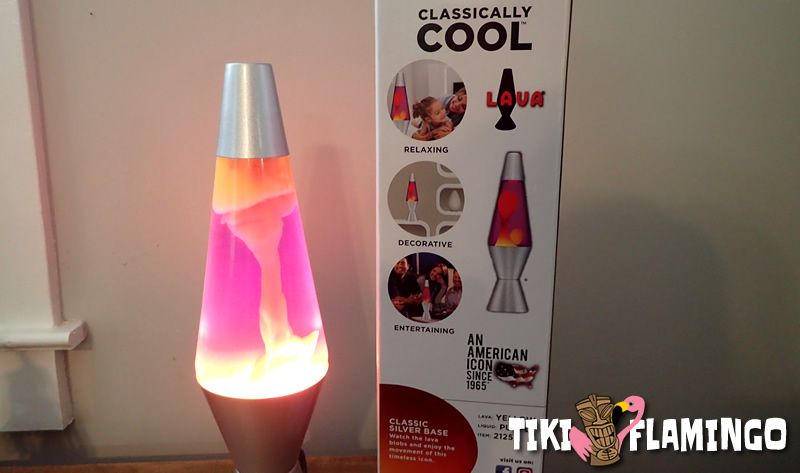
What is the Liquid in a Lava Lamp?
The liquid in a lava lamp is usually a mixture of distilled water, salt, and a surfactant like dishwashing detergent. The color of the liquid is achieved by dyes that are added to give the desired hue and lighting effect.
What is the “Lava” in a Lava Lamp?
The lava or ooze of a lava lamp is usually a mix of paraffin wax and carbon tetrachloride. The carbon tetrachloride is added to make the wax “heavier” than water at room temperature, since it would float on the water under any condition otherwise.
As the wax and carbon tetrachloride mix is heated, it becomes less dense than the above water mixture and slowly begins to rise, until it cools again and sinks back down closer to the heat from the light.
What Does the Wire Spring in a Lava Lamp do?
If you ever examined a lava lamp closely when it is off (and cool), you probably noticed a small coiled spring in the bottom of the bottle part of the lamp. It was probably covered in the wax and hard to make out, but yes, there is a spring in there.
You probably noticed that the rising and falling globules of wax don’t recombine when they collide, yet all melt together once they return to the small wax pool at the bottom of the bottle by the light bulb.
The reason for this is that the different temperatures of the wax globules creates different surface tensions. The heated spring serves the function of breaking the surface tension of the falling wax globules by elevating the temperature of the globules enough to weaken the surface tension and allow them to recombine into the heated wax pool.
Is a Lava Lamp Dangerous?
When you think about it, a lava lamp is basically a glass bottle of flammable paraffin wax and water hanging over a hot electric lightbulb. What could go wrong?
The reality is that a lava lamp, when used with common sense, is actually very safe and not much different than any other light fixture.
The biggest danger is the heat generated by a lava lamp. Although the bulb in a lava lamp is a standard incandescent or halogen bulb of low wattage (usually around 25 watts), the lamp feels hot to the touch because the lamp is designed to store that heat in the glass bottle portion of the lamp in order to function. In normal lamps that heat is dispersed into the room and there is usually a lamp shade that creates a safe space around the hot bulb.
The heat that is built up by a lava lamp that has been turned on even for quite some time is not overly dangerous. While your lamp might feel hot to the touch, the temperature shouldn’t be hot enough to ignite nearby objects. That being said, use common sense and don’t put a stack of papers or any other combustible materials next to your lava lamp.
Lastly, it hopefully doesn’t need to be said that the contents of a lava lamp should not be ingested as they can be quite toxic. If for some reason your lava lamp spills or breaks, make sure children and pets are kept far away and clean the area with water and a mild dish washing soap.
Can You Make a Lava Lamp?
Before embarking on a DIY lava lamp project it is important to consider your ultimate goal. If it is simply to create a cheap lava lamp, honestly you would be better off just purchasing one. By the time you gather the needed materials, you’ll find that you haven’t saved any money at all and have instead sacrificed both quality and safety in your quest for a homemade lava lamp.
If you are completely gung-ho on a DIY lava lamp project just for the experience or scientific education gleaned from creating one, there are many fun DIY tutorials online explaining how to make various versions of a lava lamp. Most of these, however, leverage similar scientific principles, but are not actually close to the true formulation of the original lava lamp.
The best resource and tutorial on the web was from a webgroup called oozinggoo. The tutorial and formula are no longer live, but fortunately, you can still access it through the Web Archive Wayback Machine.
It bears repeating that it would be very difficult and costly to create a homemade lava lamp that was as safe and enjoyable as the original store-bought version. Proceed with caution and know that the lamp you end up with may not be suitable for day-to-day use.
Buying a Lava Lamp
As stated near the beginning of this article, if you’ve never owned a lava lamp and have read this far, let’s rectify this situation right away! A lava lamps can turn any room into a cool, party pad or an awesome chill space. But the best part is that they are super affordable these days!
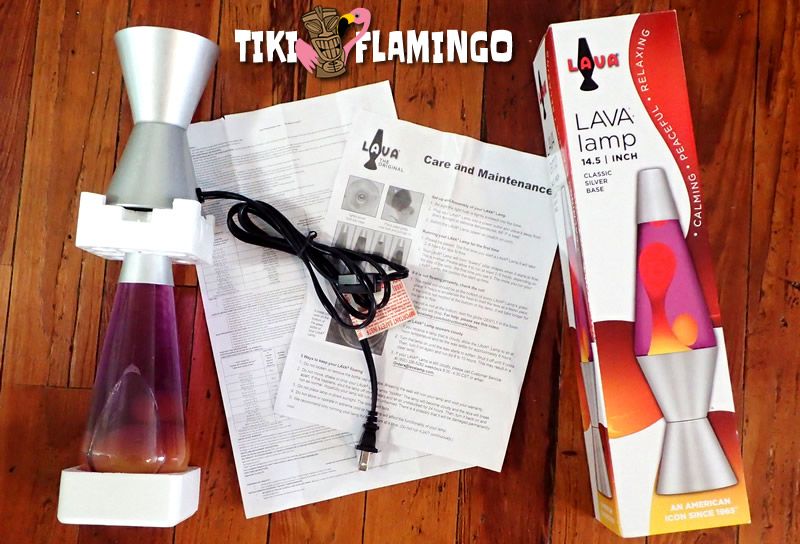
How Much Does A Lava Lamp Cost?
There are various sizes of lava lamps available ranging in height from 11.5” to 27”. Price is most reflective of size, but can change with various options, brands, and special editions.
The original 14.5 inch Original Lava Lamp can often be purchased for under 20 bucks, making it an extremely affordable piece of room decor or ideal fun gift for a friend or coworker. Mid Sized lamps of either 16.3” or 17” heights can still be purchased for well under $50, and even the largest 27” lava lamps are still rather affordable at around $100.
Another aspect that adds to their affordability is that they can be easily shipped, so purchasing online is a good option if you can’t find one in a local store.
What Colors do Lava Lamps Come In?
Lava lamps come in a mind-boggling array of colors and can be matched to almost any decorative color scheme. Not only are there color options for both the wax and liquid, but the lamp base and top also comes in a variety of metal tints and printed color schemes.
Probably the most common and well-recognized color scheme for the bottle contents is a yellow lava in a purple liquid, but other common colors include a pink wax in a purple liquid and an orange wax in a blue liquid.
Color schemes for the bases over the years have ranged from simple metallic colors to animal prints to psychedelic decals to even a chalkboard style base that you can decorate yourself.
Optional Styles of Lava Lamps
Besides size and color, lava lamps come in a wide variety of styles, including many “special editions” that have come and gone over the years.
Most of the style differences in lava lamps have to do with the lamp base. There have been lamp bases shaped like rockets, wall mounted lava lamps, and even a version powered by a tealight candle rather than a light bulb.
Optional lava lamp bottle styles include painted bottles and lava containing glitter, but not all lava lamp-shaped lights are real lava lamps. There are quite a few novelty lights out there that do not operate on the same principles as a true lava lamp.
Buying a Vintage Lava Lamp
Luckily for collectors, most all lava lamps bear the manufacture date somewhere on the lamp and it is often on both the bottle cap, and the inside or bottom of the base. The date can be printed on a sticker or stamped into the metal itself.
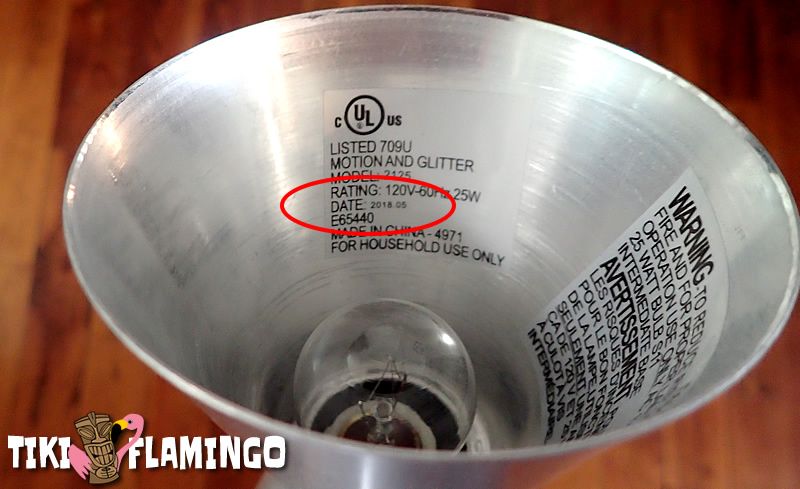
Identifying and dating vintage lava lamps that have lost their stickers or are without a discernible date can be a bit challenging, but there have been some key design changes over the years which can pinpoint the era they are from.
The original Astro Lamps made in England utilized a more liquidy wax that didn’t form as a solid clump on a cool lamp. The bases of these original lamps have a metallic copper color and were made from two separate cones that fit together. Another telltale identifier is the exposed green ground wire.
The second version of the lamp sported a much flatter top and the ground wire was concealed in the single piece base. For the third generation, felt was added to the base bottom. The fourth generation lava lamp is identifiable for its slimmer design. All these versions come from the 1960s. The most popular version from the 1970s is called the Astro and was a one-piece lamp with Bakelite base.
The caps on the bottles changed several times over the years and can also be a handy way to nail down the era of your lava lamp. Lamps with screw caps were generally made between 1965 and 1995. from 1995 forward, all lava lamp bottles had a pressed “bottle cap” style top.
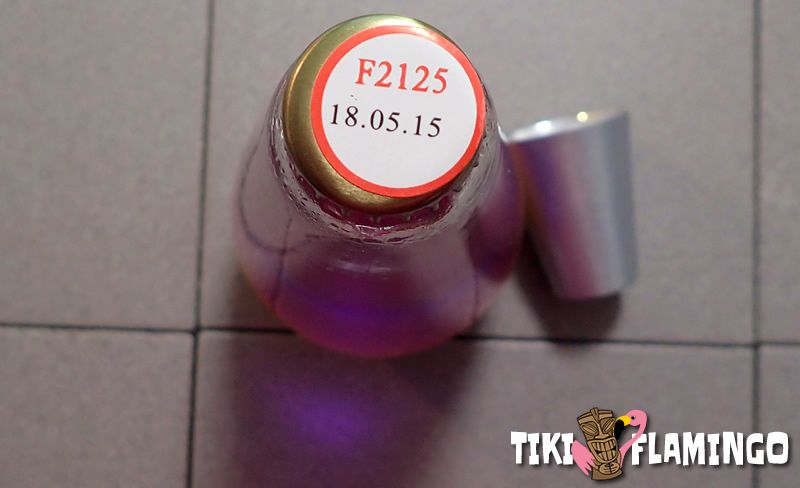
As noted above, great resource for information on identifying and restoring vintage lava lamps is the web group Oozing Goo.
Lastly, if you are searching for a collectible lava lamp, then one you should be on the lookout for is the official B-52s Lava Lamp! That’s right, that little old party band from Athens, GA sold their very own branded version for a time. They are no longer being made, but if you keep an out on Ebay, one is bound to turn up.
“Fire, fire, burnin’ bright
The B-52s. Lava, 1979
Turn on your love lava
Turn on your lava light”
Giving the Gift of Lava Light
Lava lamps make awesome gifts! Not only do they look expensive (but aren’t), but they are a fun accent for most any “decor-challenged” space.
The Perfect Housewarming Gift
Okay, this may not be a great match for everyone’s decor or tastes, but we all have friends like us who would love to own a lava lamp. This could be a kid headed off to college to live alone for the first time, a great gift to help a friend decorate a man cave or lady lair, or simply a fun gift for a new couple buying their first home.
A Fun Graduation Present
Whether that friend or family member is graduating high school, college, or grad school. the perfect gift to mark a milestone in someone’s life is obviously a lava lamp. As he or she starts off on this new journey, let their path be lighted with the odd-colored glow cast from moving molten wax.
A Great Work Party Gift
Whether it is a secret santa gab bag or a simple gift exchange at the holiday office party, a lava lamp is one of those gifts that makes everyone laugh, but secretly everyone wishes they had gotten it. More importantly it is a substantial gift (it’s decor, dammit!) that doesn’t cost an arm and a leg. Everyone will be impressed that you spent money that you didn’t actually spend.
Caring For Your Lava Lamp
Lava lamps usually don’t require much more care than an occasional dusting. But there are things you should avoid doing so as to not damage your lava lamp.
Cleaning a Lava Lamp
Make sure your lava lamp is completely cool before cleaning! Simply disassemble the various parts and wipe with a damp cloth. make sure the lamp is completely dry before plugging in and turning on.
Can You Leave a Lava Lamp on all of the Time?
if you do run your lava lamp daily, you should limit the time it is on to around 8 hours to keep the lamp from overheating. You can tell if a lava lamp has been running too long by the wax clumping at the top of the bottle. Simply turn off the lamp and the wax will fall to the bottom as it cools.
Also, as noted above, be very aware of other objects in the vicinity of your lamp. Make sure it has plenty of space and is not in contact with anything else. Even if the wax overheats, leaving it on shouldn’t cause a fire hazard unless it comes into contact with a combustible material like paper or fabric.
Finding Replacement Bulbs
Most lava lamps run on a simple incandescent 24 watt bulb and can be replaced with similar bulbs found at local home or hardware supply stores. However, if you can replace the bulb with a replacement bulb purchased from the manufacturer, you may have better results as some say the original bulbs have a specific design that makes them ideal for lava lights.
If you have an older lava lamp, check to make sure your light doesn’t have a halogen bulb before purchasing a replacement. Some lava lamps came with a screw fitting 45 watt halogen bulb. A 35W E14 SES should be the proper replacement, but double check and cross reference your old bulb to be certain.
With LEDs being a popular, energy-saving choice these days you may be tempted to seek one as a replacement. Don’t! Simply put, LEDs don’t generate enough heat to make the lava lamp function as intended. Perhaps there will be an LED bulb in the future that will work, but at the time of this writing, no such bulb exists.
Shake Your Groove Thing – Not Your Lava Lamp
One of the most important things you can do to keep your lava lamp functioning properly is to not agitate it when it is on or the lava is still warm. Shaking a hot lava lamp will cause the lava to emulsify and cloud the water.
If you do end up with a cloudy lamp, whether it has been shaken or just purchased that way, just turn it on for several 8 hour periods and it should slowly clear itself up. If it doesn’t, it may be too far gone and you will either need to buy a replacement bottle or a whole new lamp.
Another common thing that can happen to an agitated lava lamp is that the spring gets caught at the top of the wax globule on the bottom of the bottle. If this happens, simply follow the same strategy above of running your lamp through several 8hour cycles and the spring should eventually sink to its proper position at the bottom of the bottle.
Replacing the Fluid
If you have an older lamp and want to replace the fluid, you could follow the tutorial link above in the “Can You Make a Lava Lamp?” section.
If concocting your own lava lamp liquid seems to be too much of a hassle, but you want to restore a lava lamp, the good news is you can usually get parts for even vintage lamps from either the U.S. or British manufacturer.
Let Your Lava Light Shine!
Maybe we are all a bunch of weirdos here at Tiki Flamingo, but for us the lava lamp is a guiding light. It is the lighthouse for our weird little Misfit Island and illuminates the spirit of the kitschy, hippy, punk rock, science nerd that lives within us.
Whatever walk of life you’ve come from, we hope you have taken the time out to watch a lava lamp heat up and the lava begin to climb, ooze, and bubble. Simply sublime.

